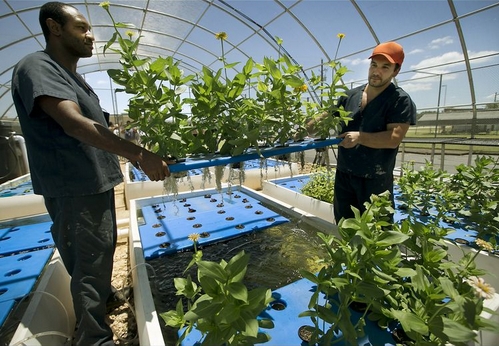Prison gardens have become pretty common, and truth be known, prison farms have been around for centuries. Many state and county correctional systems find growing food and flowers offer rehabilitative benefits for inmates, not to mention teaching them job skills, while the produce helps to keep penal facility operation costs down, and can even supply food banks and local communities with fresh, nutritious food.
But recently we’re seeing high tech gardening cropping up in U.S. correctional facilities.
Dressed in traffic-cone orange, a similar shade to the fish under their care, inmates at the San Francisco County Jail set about their weekly duties: checking for pests, pH levels and the overall welfare of the jail’s pilot aquaponics program, the first of its kind in the state.
Aquaponics weds aquaculture, or fish farming, with hydroponics, the science of gardening without soil. Water is pumped from a fish tank into plant beds, where bacteria breaks down fish waste into fertilizing nutrients for the plants. The water is then filtered as it passes through the plant beds and cycled back into the fish tank.
It’s an emerging technology that offers several benefits over conventional gardening or farming. Aquaponics uses 90 percent less water than conventional growing methods, does not use pesticides, and grows food faster.
Jails in Washington state, Colorado, Texas, and Florida have all launched aquaponics programs in just the last few years. Not only are such gardens more efficient, the bigger ones provide food to prison kitchens and, most importantly, training in an emerging field.

